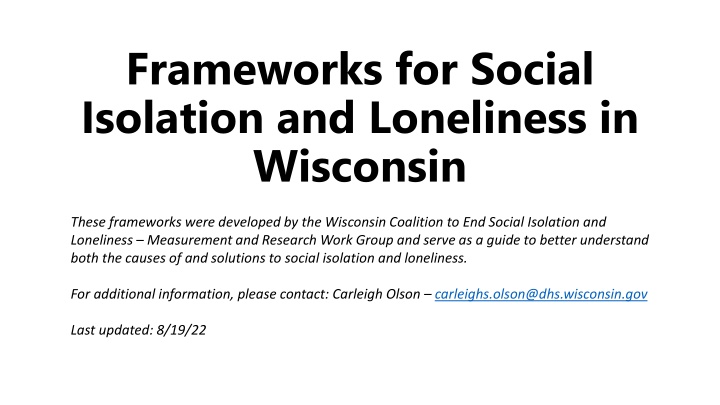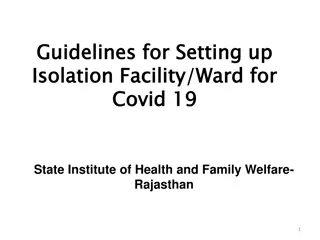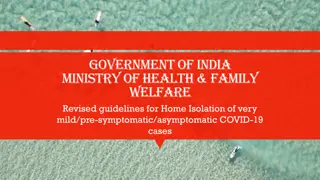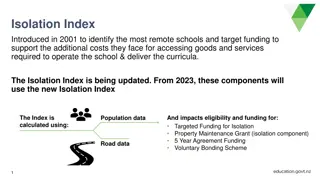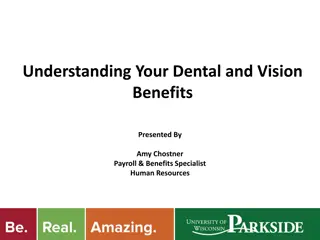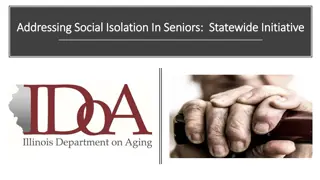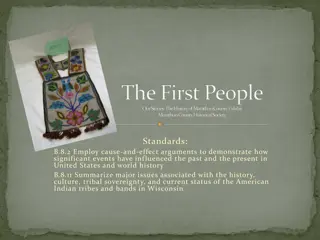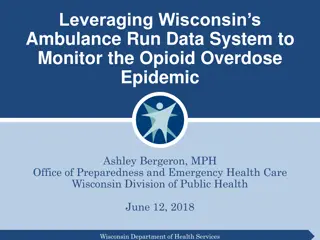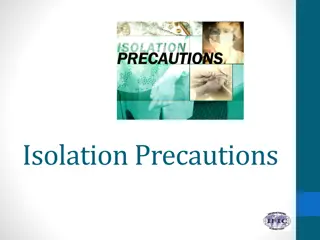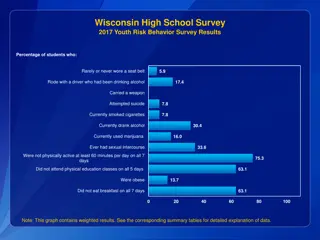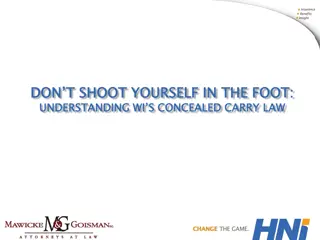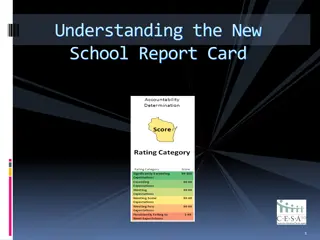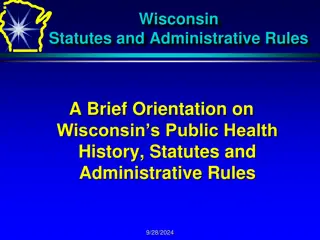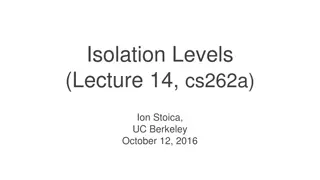Frameworks for Addressing Social Isolation in Wisconsin
Developed by the Wisconsin Coalition to End Social Isolation and Loneliness, these frameworks provide insights into the causes and solutions to social isolation and loneliness in Wisconsin. Explore risk factors and interventions to address these issues effectively.
Download Presentation

Please find below an Image/Link to download the presentation.
The content on the website is provided AS IS for your information and personal use only. It may not be sold, licensed, or shared on other websites without obtaining consent from the author.If you encounter any issues during the download, it is possible that the publisher has removed the file from their server.
You are allowed to download the files provided on this website for personal or commercial use, subject to the condition that they are used lawfully. All files are the property of their respective owners.
The content on the website is provided AS IS for your information and personal use only. It may not be sold, licensed, or shared on other websites without obtaining consent from the author.
E N D
Presentation Transcript
Frameworks for Social Isolation and Loneliness in Wisconsin These frameworks were developed by the Wisconsin Coalition to End Social Isolation and Loneliness Measurement and Research Work Group and serve as a guide to better understand both the causes of and solutions to social isolation and loneliness. For additional information, please contact: Carleigh Olson carleighs.olson@dhs.wisconsin.gov Last updated: 8/19/22
Social Social- -Ecological Model: Ecological Model: Risk Factors of Social Isolation and Loneliness Risk Factors of Social Isolation and Loneliness with examples of relevant factors at each level with examples of relevant factors at each level Life-Course Individual Relationship Community Societal Having disabilities or becoming disabled1, 20 Being aged 75 years and over1 Living alone/spending a lot of time alone1 Self-esteem and social skills22,23,26 Being widowed or divorced1 Limited financial resources1 Depression or anxiety2 Belonging to certain minority groups, including LGBTQ3,4, 25 Language barriers1 Dementia1 Decline in general health1 Loss of employment or retirement5 Losing ability to drive6 Moving to a care facility1 Losing a partner/death of loved ones1 Caregiving for a loved one1 Family support8,9 Strained relationships: friends and/or family8 Proximity to neighbors7,10 Frequency of contact with friends, family, and neighbors1 Size and quality of social network11 Religious community involvement10 Quality and reliable paid supports24 Stigma of loneliness10 Stigma of disability25, 26 Social and cultural norms15 Cultural values of independence and productivity16 Social, health, economic, and housing policies17 Discrimination such as ageism, ableism, racism, heterosexism18, 25 Lack of social cohesion19 Living in an area with: Low income or social disadvantage12 High crime or violence13 Limited opportunities for social participation or recreation14, 26 High residential mobility1 Limited access to services, amenities, and public transport1,26 Low access public spaces20 Adapted from Cotterell, Buffel, and Phillipson1
Loneliness Impact Pyramid Loneliness Impact Pyramid Increasing individual effort Examples of interventions at each level1,20 Befriending, mentoring, therapy 1-on-1 Identity-specific support groups, health Group education groups Community health workers/navigators, co-locate programs that serve two or more generations, computer and mobile app trainings Service Provision Age-friendly communities, accessible and inclusive public spaces, maintain quality public spaces, community events, accessible transportation Neighborhood Context Increasing population impact Promote positive aging and disability justice, caregiver friendly workplace policies, broadband internet access Structural Adapted from Thomas Frieden s Health Impact Pyramid21
References Cotterell N, Buffel T, Phillipson C. Preventing social isolation in older people. Maturitas. 2018;113:80-84. Evans IE, Llewellyn DJ, Matthews FE, Woods RT, Brayne C, Clare L. Social isolation, cognitive reserve, and cognition in older people with depression and anxiety. Aging Ment Health. 2019 Dec;23(12):1691- 1700. doi: 10.1080/13607863.2018.1506742. Barrington C, Messias DK, Weber L. Implications of racial and ethnic relations for health and well-being in new Latino communities: A case study of West Columbia, South Carolina. Latino Studies. 2012;10(1- 2):155 178. Fredriksen-Goldsen KI, Emlet CA, Kim HJ, Muraco A, Erosheva EA, Goldsen J, HoyEllis CP. The physical and mental health of lesbian, gay male, and bisexual (LGB) older adults: The role of key health indicators and risk and protective factors. Gerontologist. 2013;53(4):664 675. Segel-Karpas D, Ayalon L, Lachman ME. Loneliness and depressive symptoms: The moderating role of the transition into retirement. Aging Ment Health. 2018;22(1):135 140. Barrett AE, Gumber C. Feeling older and driving less: The effect of age identity on older adults transition from driving. Innov Aging. 2019;3(1):1 8. Ha JH, Hougham GW, Meltzer DO. Risk of social isolation among older patients: What factors affect the availability of family, friends, and neighbors upon hospitalization? Clin Gerontol. 2019;42(1):60 69 Hawkley LC, Kocherginsky M. Transitions in Loneliness Among Older Adults: A 5-Year Follow-Up in the National Social Life, Health, and Aging Project. Res Aging. 2018;40(4):365-387. doi:10.1177/0164027517698965 Verdery AM, Margolis R. Projections of white and black older adults without living kin in the United States, 2015 to 2060. Proc Natl Acad Sci U S A. 2017;114(42):11109-11114. doi:10.1073/pnas.1710341114 National Academies of Sciences, Engineering, and Medicine; Division of Behavioral and Social Sciences and Education; Health and Medicine Division; Board on Behavioral, Cognitive, and Sensory Sciences; Board on Health Sciences Policy; Committee on the Health and Medical Dimensions of Social Isolation and Loneliness in Older Adults. Social Isolation and Loneliness in Older Adults: Opportunities for the Health Care System. Washington (DC): National Academies Press (US); February 27, 2020. Haslam C, Cruwys T, Haslam SA. The we shave it : Evidence for the distinctive benefits of group engagement in enhancing cognitive health in aging. Soc Sci Med. 2014;120:57 66. Gonyea JG, Curley A, Melekis K, Levine N, Lee Y. Loneliness and depression among older adults in urban subsidized housing. JAH. 2018;30(3):458 474. Tung, EL, Hawkley LC, Cagney KA, Peek ME. Social isolation, loneliness, and violence exposure in urban adults. Health Affairs. 2019;38(10):1670 1678. Toohey AM, McCormack GR, Doyle-Baker PK, Adams CL, Rock MJ. Dog-walking and sense of community in neighborhoods: Implications for promoting regular physical activity in adults 50 years and older. Health Place. 2013;22:75 81. Lubben J. Addressing social isolation as a potent killer! Public Policy Aging Rep. 2017;27:136 138. Klinenberg E, Ozawa-de Silva C, Johnson J, Danely J. Lonely infrastructure. In A. Basting (Chair), Roundtable Conversations [Symposium]. Lonely No More!, Milwaukee, WI. (2022, March 30). https://uwm.edu/c21/lonely-no-more/. Dykstra PA. Older adult loneliness: myths and realities. Eur J Ageing. 2009;6:91 100. Visser MA, El Fakiri F. The prevalence and impact of risk factors for ethnic differences in loneliness. Eur J Public Health. 2016;26:977 983. Platt L. Social activity, social isolation and ethnicity. Sociol Rev. 2009;57:670 702. Wilkerson R, et al. Socially connected communities: Solutions for social isolation. Healthyplacesbydesign.org. Published March 2021. Accessed May 10, 2022. https://healthyplacesbydesign.org/wp- content/uploads/2021/03/Socially-Connected-Communities_Solutions-for-Social-Isolation.pdf. Frieden TR. A framework for public health action: the health impact pyramid.AJPH. 2010;100(4):590 595. https://doi.org/10.2105/AJPH.2009.185652 Rokach A, Lechcier-Kimel R, Safarov A. Loneliness of People with Physical Disabilities. Soc Behav Pers. 2006;34(6):681-700. Hopps SL, Pepin M, Arseneau I, Frechette M, Begin G. Disability related variables associated with loneliness among people with disabilities. J Rehabil. 2001;67(3):42-48. Hedley, D., Uljarevi , M., Foley, K. R., Richdale, A., & Trollor, J. (2018). Risk and protective factors underlying depression and suicidal ideation in Autism Spectrum Disorder. Depression and anxiety, 35(7), 648 657. https://doi.org/10.1002/da.22759 Smith, E., Zirnsak, T. M., Power, J., Lyons, A., & Bigby, C. (2022). Social inclusion of LGBTQ and gender diverse adults with intellectual disability in disability services: A systematic review of the literature.Journal of applied research in intellectual disabilities : JARID, 35(1), 46 59. https://doi.org/10.1111/jar.12925 Abbott, S., & McConkey, R. (2006). The barriers to social inclusion as perceived by people with intellectual disabilities. Journal of intellectual disabilities : JOID, 10(3), 275 287. https://doi.org/10.1177/1744629506067618 1. 2. 3. 4. 5. 6. 7. 8. 9. 10. 11. 12. 13. 14. 15. 16. 17. 18. 19. 20. 21. 22. 23. 24. 25. 26.
